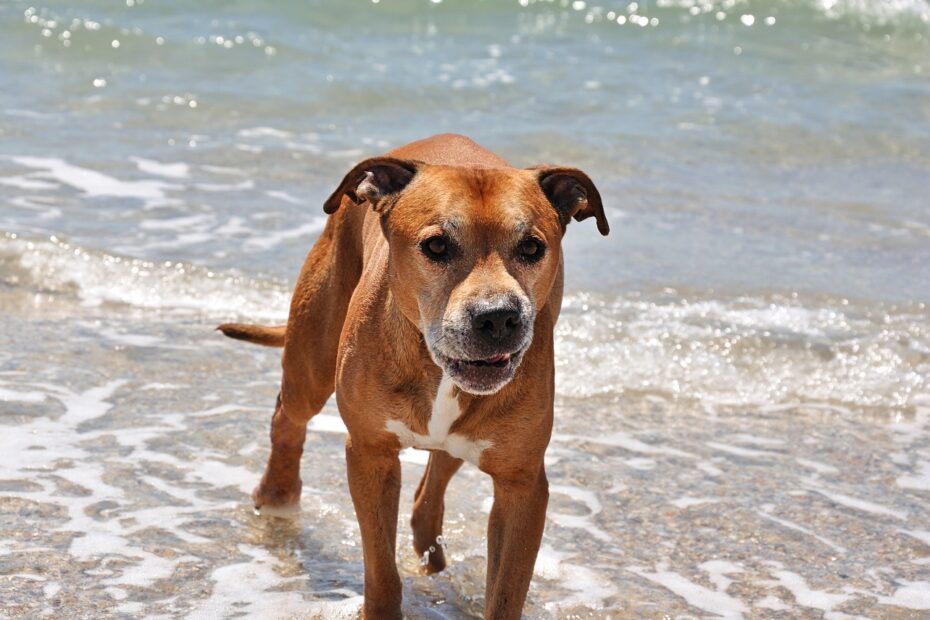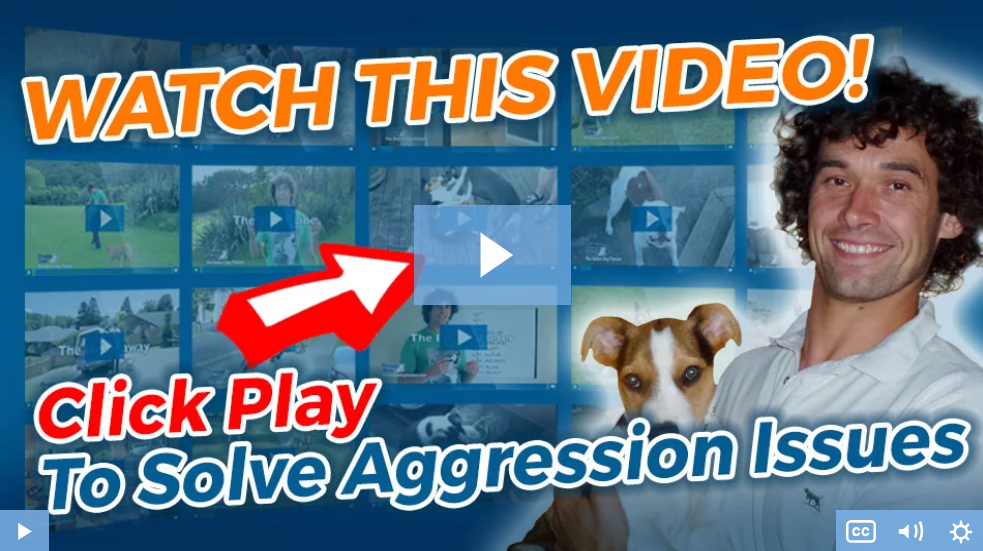If your dog bit someone for the first time, then the first thing you need to remember is don’t panic. Because while biting isn’t the friendliest gesture your dog can demonstrate, the truth is that it happens more than you might realize.
Regardless of age, breed, gender, and temperament, all dogs have the potential to bite. And if that potential becomes a reality, it can be an incredibly scary thing.
If it’s only just happened, you probably have all kinds of thoughts swirling around in your head.
…Will there be any legal consequences?
…Could your dog be taken away from you, even euthanized?
…Does the fact they’ve bitten once mean they’ll bite again?
Ultimately, I can’t tell you the answers to those kinds of questions because every case is different. What I can tell you is that if your dog has bitten once, you need to take action now. Because the sooner you tackle the problem, the sooner you can ensure it doesn’t happen again.
The key thing to remember is that while most dog bites can be prevented, the key to guaranteeing that lies with you, not necessarily your dog.
It’s down to you to figure out what made your dog bite in the first place, and it’s down to you to put the necessary steps in place to stop it from happening again.
That may sound like finger-wagging, but owning a dog comes with responsibilities. Part of those responsibilities involves keeping other people safe from your dog, and your dog safe from the triggers that could result in harmful behavior.
If all of this sounds daunting, don’t panic. Dogs aren’t so complicated that it’s impossible to figure out the motivation for their behavior. Neither are the solutions to that behavior so hard it would take a master dog trainer to implement them.
Before we start looking at some of the common explanations and solutions for biting, I’d recommend you start by checking out the Dog Calming Code from Dan Abdelnoor over at the Onlne Dog Trainer. (see video below)
The program has been specially put together to address common behavioral issues, including biting and other aggressive tendencies.
Designed to help a dog stay calm, controlled, and collected regardless of what’s happening around them, the program uses techniques that are simple to understand and even simpler to master.
If you can watch, learn and implement the training advice you see, you’ll be well on your way to a better-behaved dog.
Here’s the link to take a look: Click Here To Discover How To Stop Your Dogs Dangerous, Unwanted Biting Habit… Even If You’re Not A Dog Trainer!
(video will open in a new window)
My Dog Bit Someone For The First Time
Sometimes, it might seem like there’s no rhyme or reason for a dog deciding to bite. The truth is, there always is, even if we can’t see it initially.
The problem is, dogs don’t think like us. They don’t behave like us. If we want to get to the bottom of their behavior, we need to stop interpreting it through our own lens and start seeing the world through a dog’s eye.
Take a moment to step back and consider the lead-up to your dog’s behavior. Then take a look at some of these common explanations for why dogs bite.
Do any sound a match?
Fear
Much like humans, dogs go into flight or fight mode when they get scared.
As to what makes them scared.. well, take your pick. It could be another dog, a stranger, a loud noise, a new environment… the possibilities are endless.
Typically, dogs that haven’t been socialized, that have a history of abuse or neglect, or who’ve been passed around multiple homes are more prone to developing fears.
That said, even the most well-adjusted dog from the most loving home can still develop the occasional anxiety or phobia.
Regardless of what’s behind the fear, the outcome is the same: the dog will feel threatened and under attack. If they can’t escape, they’ll go into defense mode and lash out instead.
Protective Instinct
If you thought mama bears were the most protective creatures in the animal kingdom, just wait till you see how far a dog will go to protect its pack.
If they feel like their puppies or anyone else in their pack (and yep, that includes you) is under threat, they won’t hesitate at sinking their teeth into the attacker.
Possessiveness/ Resource Guarding
When it comes to food, chews, toys, and even their favorite people, some dogs just don’t like sharing.
If someone approaches one of their prized possessions, they won’t think twice about seeing them off.
Frustration
Dog can’t always get what they want, but that doesn’t stop them from getting mighty frustrated when they can’t.
If they see something they really, really want but can’t get (a plate of bacon on a high surface, a cat up a tree, another dog behind a fence). They’ll get tense, agitated, and prone to lashing out at the first available target they come across.
Pain
No one likes to think of their dog in pain, but it happens, and when it does, even the most placid and friendly dog can act in uncharacteristic ways.
It could be something like a minor injury they’ve picked up on a walk. It could be something more serious like a neurological or cognitive condition.
Regardless of what it is, it may end up causing as much pain to anyone who approaches them or touches them as it does to them.
Territorial Behaviour
Territorial dogs might make great guard dogs, but when they can’t understand the difference between a mailman and a burglar, problems can swiftly arise.
If your dog has over-developed territorial instincts, any ‘intruder’ that threatens their turf is likely to end up in a heap of bother.
Lack of Socialisation
Dogs need to be gently introduced to a wide variety of people, places, animals, sounds, and experiences from a young age.
If they’re not, anything new or unfamiliar they come across in later life can give rise to anxiety, mistrust, and, all too often, bared teeth.
Related Post: How To Socialize An Aggressive Dog – A Step By Step Guide
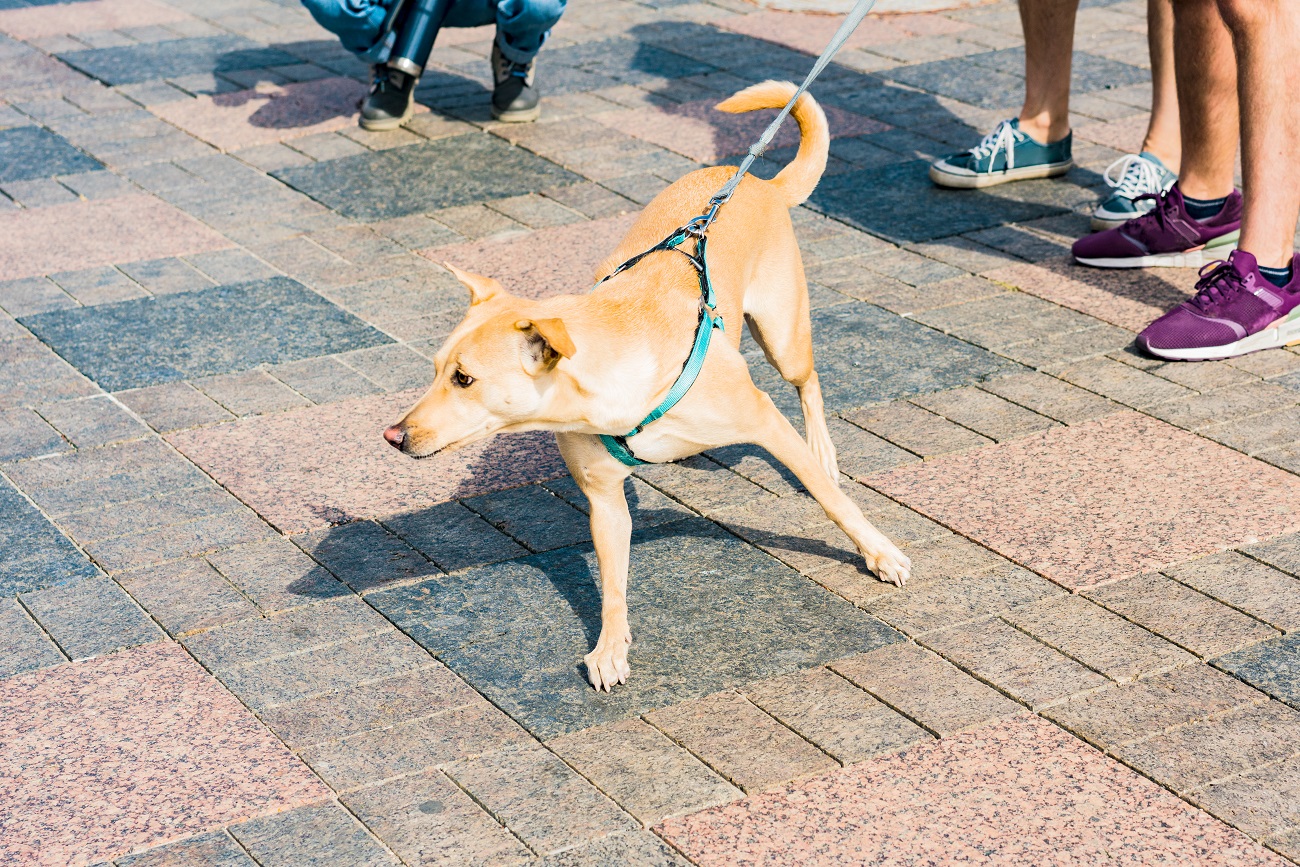
How to Stop Your Dog Biting
Now we’ve looked at some of the reasons a dog will bite, we come to the all-important question: how do you stop it from happening?
First and foremost, you’re going to need to teach them focus, control, and emotional stability.
If that sounds like mission impossible, take a moment to check out the Dog Calming Code I mentioned earlier. It won’t do the work for you, but it will make that work far, far easier, and more productive than it’d be otherwise.
Once you’ve checked out the link, take a look at some of the following strategies.
Identify the Root Cause
There’s no point in training a dog who’s sick, and there’s no point in treating a dog who bites out of fear the same way as you’d treat one who bites out of frustration.
Some solutions are universal, but some problems require a tailored approach. If you don’t figure out what the actual problem is, you’ll never truly address it.
Before you do anything else, take some time out to evaluate the circumstances around what made your dog bite.
…Did someone approach them when they were eating?
…Are they a rescue dog with an uncertain history?
…Did they flip out after hearing a car backfire?
It might take a bit of work to understand the motivation, but the more work you put in at this stage, the more constructive the next one will be.
Get Them Checked Out
Before you launch into any training or behavior modification, take your dog to the vet.
If they’ve only bitten someone once and haven’t shown signs of aggression in the past, their behavior might be rooted in a medical issue.
It might be something that can be easily fixed; it might be something that requires ongoing management. Either way, it’s not going to go anywhere until your get it diagnosed and treated.
If your vet gives them a clean bill of health, but suspects anxiety might be to blame for their behavior. They may recommend a short-term course of anti-anxiety medication while you work on tackling the problem on a long-term basis.
Prevent While You Cure
Depending on the underlying cause of your dog’s behavior, it may take some time before you address it fully through training. In the meantime, take steps to avoid anything that could trigger a repeat attack.
Be aware of their limitations and avoid putting them in situations that could lead to stress and aggression.
If they get protective over toys, clear those toys away before any visitors arrive. If they get testy around food, don’t approach them while they’re eating and let other people know to do the same.
Warn other people about the potential problem, and don’t let your dog approach other people or animals unless it’s in a controlled environment.
None of these solutions will necessarily fix the problem, but they’ll at least keep everyone safe in the meantime.
Related Post: How To Calm An Aggressive Dog – Simple Tips For Aggressive Behavior
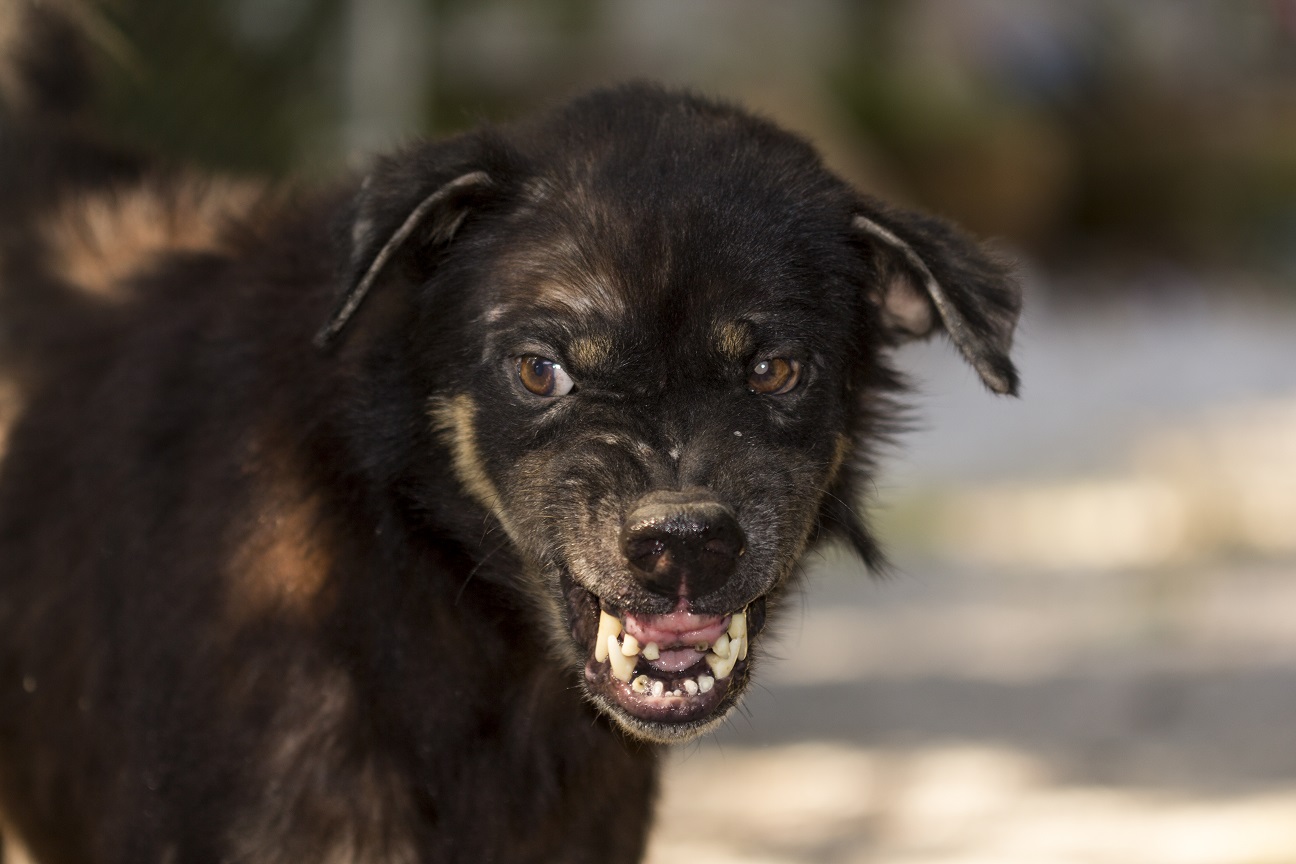
Socialize Them
Ideally, socialization needs to be done from a young age, but don’t worry if your dog’s getting long in the tooth: it’s never too late to learn some new tricks.
The aim of socialization is to allow your dog to meet and interact with as many different people (including the elderly, children, and the disabled) and animals in as wide a variety of situations as possible.
The more accustomed they become to different sights and sounds, the less fear they’ll show around those situations in the future.
Keep the introductions gentle, fun, and don’t forget to praise and reward your dog whenever they react calmly to a new experience.
The aim of the game is to build positive associations. And if there’s one thing almost guaranteed to create positive associations in your dog’s mind, it’s a mouthful of their favorite treats.
Learn Dog Language
If you can learn canine body language, you’ll be in a much better position to spot the signs that can lead to a bite. Whenever your dog is around other people or other dogs, watch out for telltale signs of unease such as…
- A stiff posture
- A fixed gaze
- A wrinkled muzzle
- A lowered tail
As soon as you notice any of the warnings, stop what’s happening and remove your dog from the situation before it escalates.
Try Some Basic Training
You don’t have to be a fully certified dog trainer to put your dog through some basic training.
Simple obedience training can go a long way to teaching impulse control and discipline, both of which can prevent your dog from reacting to situations in an undesirable way.
If you’re not sure where to start, the Dog Calming Code is simple, effective, and an excellent tool to teach your dog to stay calm, focused, and mindful of your instructions, regardless of what’s happening around them at the time.
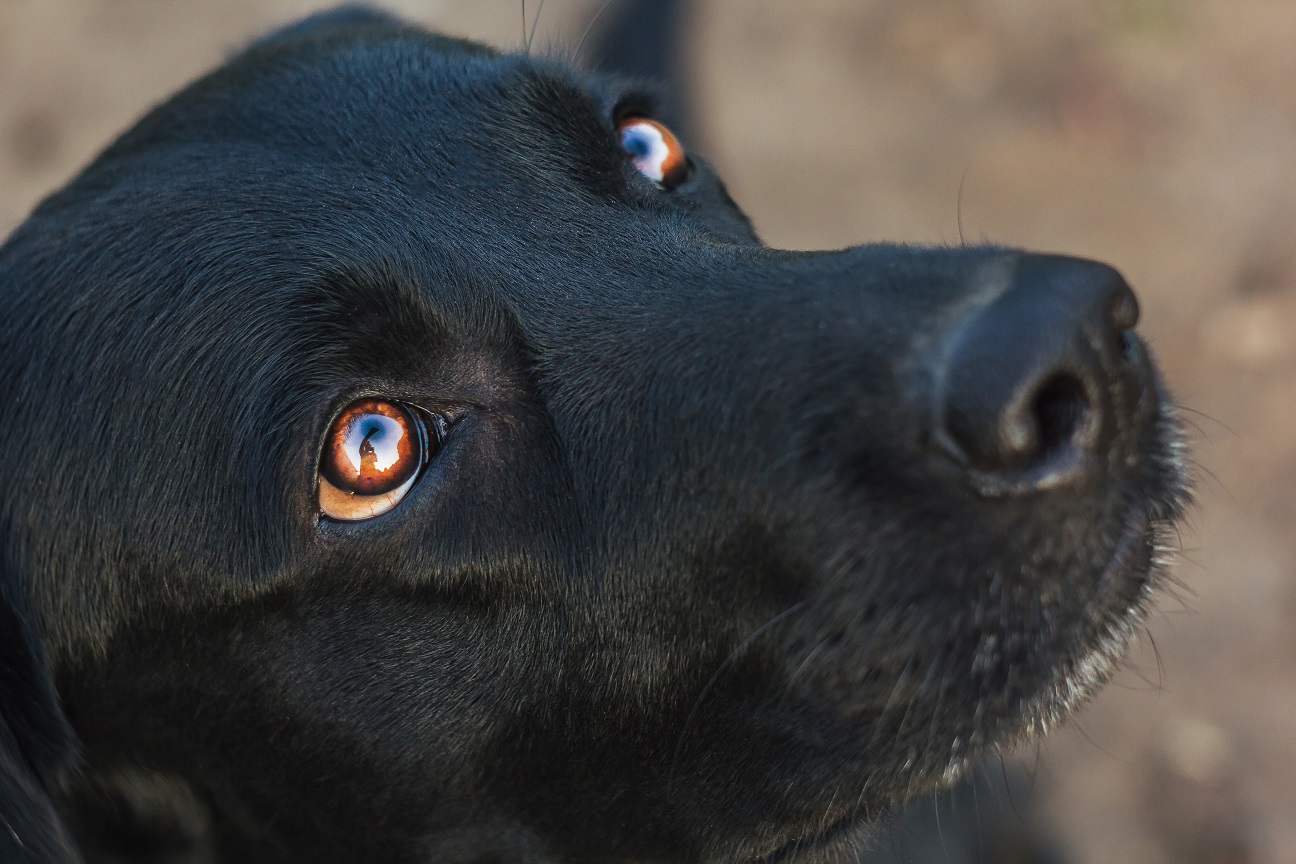
Final Thoughts
There’s no denying that a dog that bites is a dog that needs to be taken seriously.
But while it’s easy to panic when it happens, try to stay calm. Many dogs bite at least once in their life, but that doesn’t mean they’re all innately aggressive and need to be treated with kid gloves forever.
If you can identify the cause of the behavior, you stand an excellent chance of addressing it and ensuring it doesn’t happen again.
Regardless of whether the solution involves more socialization, increased training, behavior modification, or anything else, remember to stay patient and stay persistent – the more consistent you are, the better the results will be.
